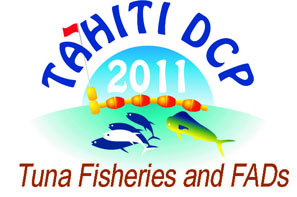On the role of FADs in the ecology of juvenile silky sharks
1 : Department of Ichthyology and Fisheries Science, Rhodes University
(DIFS)
Department of Ichthyology and Fisheries Science, Rhodes University, Grahamstown 6140 -
Afrique du Sud
2 : Institut de Recherche pour le Développement
(IRD)
UMR 212, P.o. Box 570, Victoria -
Seychelles
3 : South African Institute for Aquatic Biodiversity
(SAIAB)
Private Bag 1015, Grahamstown, 6140 -
Afrique du Sud
4 : Institut de Recherche pour le Développement
(IRD)
* : Corresponding author
UMR 212
Av. J. Monnet, 34203, Sete -
France
Silky sharks (Carcharhinus falciformis) are the main elasmobranch species found around drifting FADs and as such, are commonly taken by purse seiners as bycatch. Here, we investigate the role that FADs play in the ecology of this species through the use of acoustic telemetry, pop-up satellite tags (miniPATs) and dietary analysis of silky sharks caught at FADs. Residence times and vertical data were collected from 10 silky sharks (73 -109 cm TL) tagged with acoustic transmitters equating to 77.3 d of observation around 5 drifting FADs between March 2010 and June 2011 in the western Indian Ocean. Sharks were found to associate with the same FAD for several days (mean = 5.5 d, range: 2.8 – 16.6 d) and typically undertook excursions away from the FAD at night, as has been found previously. While closely associated during the day, sharks typically remained shallow (< 30 m) often reaching a maximum depth around midday. Average day and night depths were not significantly different but data from two sharks double tagged with miniPATs indicate that the amplitude of the diving behaviour at night, during excursions, was far greater, suggesting nocturnal foraging away from FADs. In addition, stomach samples from 130 sharks incidentally caught around FADs by purse seine vessels provided useful information on the proportion of the diet consisting of prey items that commonly associate with FADs. Combining data from the behaviour (acoustic tags and miniPATs) and diet, we show that floating objects form a key component in the pelagic habitat for these sharks during their early life stages.

 PDF version
PDF version
